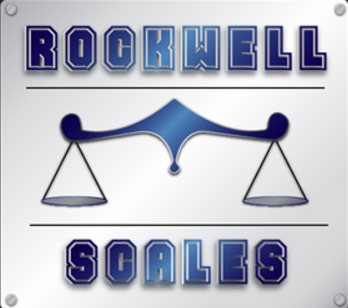Understanding Montana’s Truck Weight Limits: What You Need to Know
December 1, 2023 11:14 pm Leave your thoughts Montana, known as “Big Sky Country,” is not only famous for its breathtaking landscapes, but also for its extensive trucking industry. With vast distances to cover and hauling needs ranging from agricultural products to heavy equipment, it is crucial for truckers in Montana to be aware of the weight limits imposed on their vehicles. In this blog post, we will break down the weight limits in Montana, explain the consequences of exceeding these limits, and discuss how truck scales help enforce these regulations.
Montana, known as “Big Sky Country,” is not only famous for its breathtaking landscapes, but also for its extensive trucking industry. With vast distances to cover and hauling needs ranging from agricultural products to heavy equipment, it is crucial for truckers in Montana to be aware of the weight limits imposed on their vehicles. In this blog post, we will break down the weight limits in Montana, explain the consequences of exceeding these limits, and discuss how truck scales help enforce these regulations.
Understanding the Weight Limits:
Truck weight limits in Montana are determined by the Gross Vehicle Weight Rating (GVWR) and the maximum axle weight. The GVWR is the maximum total weight that a truck can carry, including its own weight and the weight of the cargo. On interstate highways in Montana, the general GVWR limit is 80,000 pounds, unless a permit is obtained for overweight or oversize loads. However, there are variations in weight limits depending on the type of road, including primary highways, secondary highways, and local roads.
In addition to the GVWR, the maximum axle weight limit also plays a significant role in determining whether a truck is compliant with Montana’s regulations. The maximum weight allowed per axle varies based on the type of axle, such as tandem axles or a single axle. For example, the maximum weight limit for a tandem axle is 34,000 pounds. Truckers must ensure that the weight is distributed evenly across the axles to avoid excessive pressure on individual axles, which could cause damage to roads and bridges.
Consequences of Exceeding Weight Limits:
Exceeding truck weight limits can have serious consequences, not only for the trucker but also for the state’s infrastructure and public safety. The primary concern is the wear and tear on Montana’s roadways, which are already subjected to harsh weather conditions. Overloaded trucks put significant stress on bridges, pavements, and other infrastructure, leading to premature deterioration and increased maintenance costs. This burden ultimately falls on taxpayers.
Another consequence of exceeding weight limits is the increased risk of accidents. Overloaded trucks are more challenging to control, especially during emergency maneuvers or when navigating steep grades. Braking distances also increase, reducing stopping time, and potentially causing rear-end collisions. Such accidents not only endanger the driver and other road users but also lead to delays, traffic congestion, and potentially devastating environmental hazards if hazardous materials are involved.
Truck Scales: Enforcing Weight Regulations:
To enforce weight regulations effectively, Montana employs truck scales at various critical points throughout the state. These strategically located scales serve both as check points and educational tools for truckers, informing and reminding them of weight limits. Truck drivers are required to stop and submit to weighing when directed by the highway patrol or other authorized personnel.
Truck scales come in various types, including weigh stations where trucks drive onto a platform scale, portable scales that can be set up on the side of the road, and weigh-in-motion (WIM) scales that measure the weight of moving vehicles without requiring them to stop. WIM scales have gained popularity due to their ability to check a higher number of trucks efficiently, reducing delays and improving traffic flow.
Additionally, Montana also employs technology to monitor truck weights. For example, some weigh stations are equipped with automated identification systems that can capture license plate numbers or radio frequency identification (RFID) tags on trucks. This automated data collection allows for efficient monitoring of truck compliance and simplifies paperwork processes. It helps to identify violators more promptly and reduces the chance of overloaded trucks going undetected on the roads.
Summary:
Truck weight limits in Montana play a critical role in preserving the state’s infrastructure and ensuring public safety. By understanding these weight limits, truckers can avoid potential consequences such as increased maintenance costs, accidents, and legal penalties. Truck scales, including weigh stations and WIM scales, are invaluable tools in enforcing these regulations. They not only help identify overloaded trucks but also help educate truckers about the importance of compliance. It is essential for truckers to embrace a culture of responsible hauling in Montana and play their part in maintaining the state’s infrastructure and safety standards.
Need Heavy-Duty Scales in Great Falls, MT?
Welcome to Rockwell Scales! Rockwell Scales has been a premium retailer and service provider all over the world since 1980. We are a full-service company that installs, repairs, and builds scale systems. Our highly trained and specialized team is available for agricultural, industrial, and mining scale setup. We offer a wide array of sizes, brands, accessories, and weight limits. Rockwell Scales has many repeat customers and places customer service as a top priority. We use the best equipment available, ensuring a high-quality job. Give us a call today to make an appointment!
Categorised in: Truck Scales
This post was written by admin
